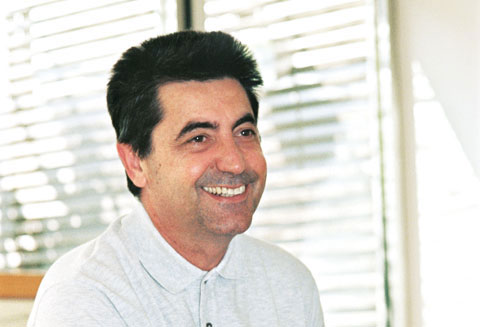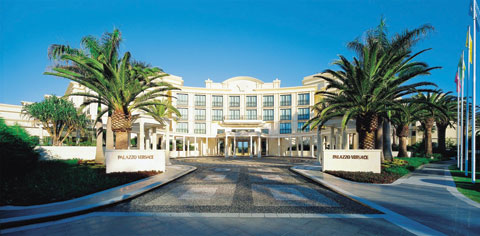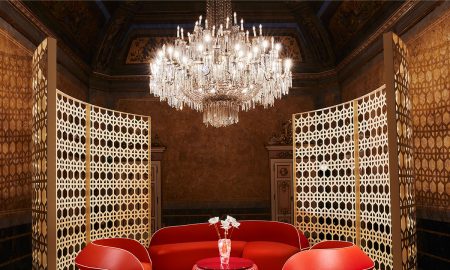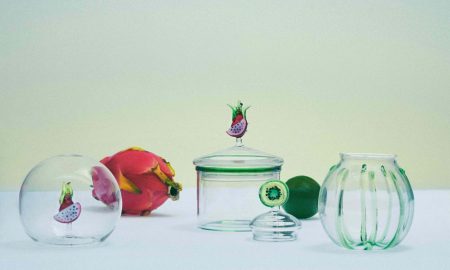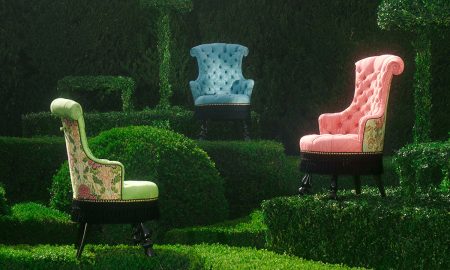What is it about Italian design, be it in fashion, architecture, interiors, or products that has the world so captivated? Haute Living approached Italian superstar designer Antonio Citterio in search of the answer to this ultimate age-old question
By Ayesha Khan
Proving that design knows no bounds, Citterio’s indelible mark can also be seen at the flagship stores of high fashion on Milan’s Via Montenapoleone.
Italian designer Antonio Citterio is a veritable renaissance man of our time. His canvas? Sleek streamlined buildings. His sculptures? The finest pieces of furniture and products the likes of Vitra, Flos, B&B Italia, and Kartell have ever seen. Citterio designs virtually anything and everything, from luxury lifestyle hotels and boutiques of haute fashion, to high-end bathroom fittings.
Born in Meda in 1950, Citterio studied architecture at the renowned Politecnico di Milano (which spawned such creative geniuses as Renzo Piano), and opened his design studio shortly thereafter in 1972. He now has two offices in Milan and Hamburg. One of the designer’s earliest projects involved the restyling of a historic block in Seregno, but it was his partnership with Terry Dwan that brought Citterio a wealth of projects around Europe and Japan.
Soon the world began to take notice and truly appreciate Citterio’s particular brand of minimalist elegance. He was approached by B&B Italia, and continues to design for the ultimate house of contemporary Italian furniture. In fact, his streamlined approach has become synonymous with B&B’s image. It is in this lucrative field of industrial design that Citterio truly flourished. “I make things for myself, I don’t work with marketing instructions…If I won’t surround myself with these things, I don’t make them,” he explains. Citterio’s vast repertoire reads like an A-list of houses of Italian and international product and furniture design. Axor-Hansgrohe, Flexform, Tre Pù, and Albatros are just a few of the names that Citterio has to his credit. Of his great success in industrial design, Citterio says, “The things I have done are companies, not pieces. I’ve been working for B&B Italia for twenty-seven years, fifteen years for Vitra, fifteen years for Kartell. Of course, I am glad about the works that have become part of the MOMA or the Beaubourg collections!”
Proving that design knows no bounds, Citterio’s indelible mark can also be seen at the flagship stores of high fashion on Milan’s Via Montenapoleone. Although Citterio admittedly refuses to wear “everything that most fashion designers create,” his profound understanding of the couture experience can clearly be seen in his boutique designs. “I think shopping comes from pleasure,” he explains. This is certainly true of Valentino’s Milan flagship, where Citterio expertly created a shell that is a seamless architectural continuation of Valentino’s distinct design style. Each of the store’s two floors, laid out over a total area of 2150 square feet, features a series of sleek niches framed by a single slender bronze border, and subtly illuminated with cove lighting.
Following the success of Cerruti’s flagship store in Milan, Citterio was also invited to impart his design magic upon the Italian fashion house’s Madison Avenue outlet. He took the opportunity to completely demolish and re-hash the building’s interiors, creating an imposing double height entrance and thirteen foot screen, providing instant ‘wow’ factor upon arrival. Further inside, the sales floor appears as a series of sleek monochromatic design statements from B&B Italia and Maxalto. Two elegantly furnished VIP sales areas appear beyond sleek pocketed wenge wood doors, providing the exclusivity and privacy that is to be expected of haute couture.
Soon another lucrative opportunity in the fashion industry beckoned, one that was right up Citterio’s alley. The house of Bulgari was intent upon opening a hotel in a charming 1950’s building on Milan’s Via Gabba, just steps away from everything glamorous in the fashion capital. A white marble façade stands in stark contrast to its surroundings and interiors. Inside, a sleek palette of black Zimbabwean marble, Burmese teak, and fine fabrics are countered by soaring sixteen foot ceilings. A manicured garden provides a stunning focal point of the hotel’s restaurant, where a lenticular ceiling is suspended over a massive balcony in black resin. In the basement spa, subtle lighting combines with Vicenza stone and Turkish Aphyon to create a distinct, tranquil ambiance that speaks volumes of elegance. Rooms are tastefully appointed with beached oak, calming neutral shades, and Citterio’s signature clean-lined minimalism, inspired by a host of great masters. Citterio admits to being enamoured by the Italian protorationalist architects and masters such as Luis Kahn, le Corbusier, Tadao Ando and Frank Gehry. “Siza is the contemporary I respect most,” says Citterio of the celebrated Portuguese Pritzker prize winner. Subtle echoes of each master’s work can clearly be seen in all that Citterio does.
Bulgari soon followed up with a foray into destination resorts via the Southeast Asian tourist haven of Bali, and, of course, Citterio was more than happy to impart his design prowess. For this tropical chapter in the Bulgari Hotels and Resorts story, Citterio chose to meld his Italian design influences with those from Asia. The result is a cluster of 59 villas that appear to grow from their terraced cliff side terrain overlooking the Indian Ocean. Outside, the villas are appointed in a diverse palette of natural materials, from green subakumi to hand-cut volcanic stone. Inside, an array of precious woods and over ninety pieces of authentic Balinese art add a unique refinement befitting the Bulgari name and repudiation.
From houses of luxury fashion to luxury homes, Citterio also enjoys the challenges and endless opportunities of residential design; his residential projects range from Milan to Como in his native Italy, and appear in New York, Germany and Switzerland. Perhaps the most striking among them is a beach house in Sardinia, where striking, monochromatic furniture, whitewashed walls, and strong lines create the perfect frame to the elaborate garden and seascape beyond its oversized windows. A oneness with fine art and continuity between interior and exterior spaces are paramount in Citterio’s fluid designs.
So how would this raconteur of Italian architecture and design define his style? “I’m in a cold sweat!” he jokes, “If I do have [a style], it’s news to me….I know what I like and what I don’t like. Someone else has to judge whether my approach can be defined as a style,” he adds, in a humble, un-fussed tone befitting his casual demeanor.
And what does the future hold for this great all-arounder? This year Citterio, recently named professor at the Accademia di Architettura dell’Universita della Svizzera Italiana, will embark on a series of promising projects in and around Italy. January saw his firm win an international architectural competition for the renovation of the historic Ferrante Aporti building in Milan. As for that ever-elusive “dream project,” Citterio says, “I would like to design buildings that aren’t contaminated by commercial aspects: a church, a museum- where what is inside the building enhances the building itself.” His advice to up and coming designers: “Don’t force it. If it doesn’t work, don’t do it. You can’t whip the cream? It doesn’t matter!”







